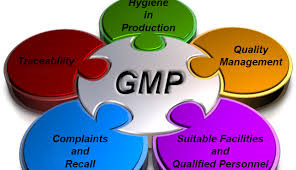China is known for its expertise in manufacturing and exporting a wide range of products. However, with the increasing demand for pharmaceuticals worldwide, the country has been focusing on ensuring that its pharmaceutical products meet international quality standards. This is where Good Manufacturing Practices (GMP) come into play. In this blog post, we will explore China’s GMP regulations for pharmaceuticals and the country’s efforts to ensure the safety and efficacy of its pharmaceutical products.
History of China’s GMP
China’s journey with GMP regulations began in the late 1980s when it adopted the first GMP regulations for pharmaceuticals. Since then, China has been continuously refining and improving its GMP regulations to align with international standards. The most significant changes came in 2011 when China revised its GMP regulations to include stricter guidelines for pharmaceutical manufacturing.
In recent years, China drug manufacturers have gained a better reputation internationally. This recognition has been due to the country’s efforts to ensure that its pharmaceutical products are safe and of high quality. China’s pharmaceutical industry has been making significant strides in this regard, and its products have been increasingly accepted by international markets.
Implementation of China’s GMP
China’s GMP regulations for pharmaceuticals are implemented through a combination of national standards, inspections, and certifications. The National Medical Products Administration (NMPA) is responsible for regulating pharmaceutical manufacturing in China. The agency has set up a comprehensive GMP inspection and certification system to ensure that pharmaceutical companies comply with the regulations. With this system in place, the NMPA has been able to better monitor and control production processes, as well as detect and address any potential safety risks.
In addition to the GMP standards, China also maintains a strict set of Good Manufacturing Practice (GMP) guidelines. This includes training of personnel involved in drug manufacturing, quality-control testing, and maintenance of compliance records. GMP certification is required for any facility that produces drugs, as well as those involved in the research and development of drugs. The NMPA has established a system to inspect these facilities and determine if they are meeting the requirements set by Chinese authorities.
National GMP Standards
China has set up national GMP standards that pharmaceutical companies must adhere to. These standards cover various aspects of pharmaceutical manufacturing, including personnel, facilities, equipment, materials, documentation, production, and quality control. The standards aim to ensure that pharmaceutical products are safe and of high quality.
Additionally, these standards are regularly reviewed and updated to keep up with the changing times. This means that pharmaceutical companies have to constantly update their operations and processes to comply with the latest regulations.
GMP Inspections and Certifications
The NMPA conducts regular GMP inspections on pharmaceutical companies to ensure that they comply with the national GMP standards. The inspections cover all aspects of pharmaceutical manufacturing, including facilities, equipment, materials, documentation, production, and quality control.
Pharmaceutical companies that meet the GMP standards are issued with GMP certification. The certification is a testament to the company’s commitment to quality and ensures that its products are safe and effective.
Quality Management Systems
These require pharmaceutical companies to establish and maintain quality management systems (QMS). The QMS is a set of policies, procedures, and controls that ensure that the products are of high quality and comply with the GMP standards. The QMS covers all aspects of pharmaceutical manufacturing, including personnel, facilities, equipment, materials, documentation, production, and quality control.
Key Components of China’s GMP
These cover various components that ensure the safety and quality of pharmaceutical products. These components include:
- Personnel – China’s GMP regulations require that personnel involved in pharmaceutical manufacturing be adequately trained and qualified. The regulations also require that personnel observe good hygiene and safety practices to prevent contamination of pharmaceutical products.
- Facilities and Equipment – Facilities and equipment used in pharmaceutical manufacturing must meet specific requirements set by China’s GMP regulations. The facilities must be designed and constructed to prevent the contamination of pharmaceutical products. The equipment must also be properly maintained and calibrated to ensure accuracy and reliability.
- Materials and Documentation – To adhere to the regulations, companies must ensure that their raw materials and packaging materials meet precise standards. These regulations also demand meticulous record-keeping and documentation of all aspects of the manufacturing process, including materials, procedures, and quality control measures. By adhering to these guidelines, companies can ensure the consistency and safety of their pharmaceutical products.
- Production and Quality Control – To ensure that pharmaceutical products meet the required standards and are safe and effective, China’s GMP regulations mandate that pharmaceutical companies must establish and maintain effective production processes and quality control systems. To achieve this, companies are required to validate their processes and maintain detailed records of production and quality control activities. The overarching objective of these regulations is to guarantee that pharmaceutical products are consistently manufactured to meet the necessary standards.
—-
China’s GMP regulations for pharmaceuticals have come a long way since the country adopted the first regulations in the 1980s. The country has made significant strides in ensuring that its pharmaceutical products meet international quality standards. China’s GMP regulations cover various aspects of pharmaceutical manufacturing, including personnel, facilities, equipment, materials, documentation, production, and quality control. The regulations are implemented through national standards, inspections, and certifications. While China still faces challenges in enforcing GMP regulations, the country is increasing its commitment to ensure the safety and efficacy of its pharmaceutical products.

